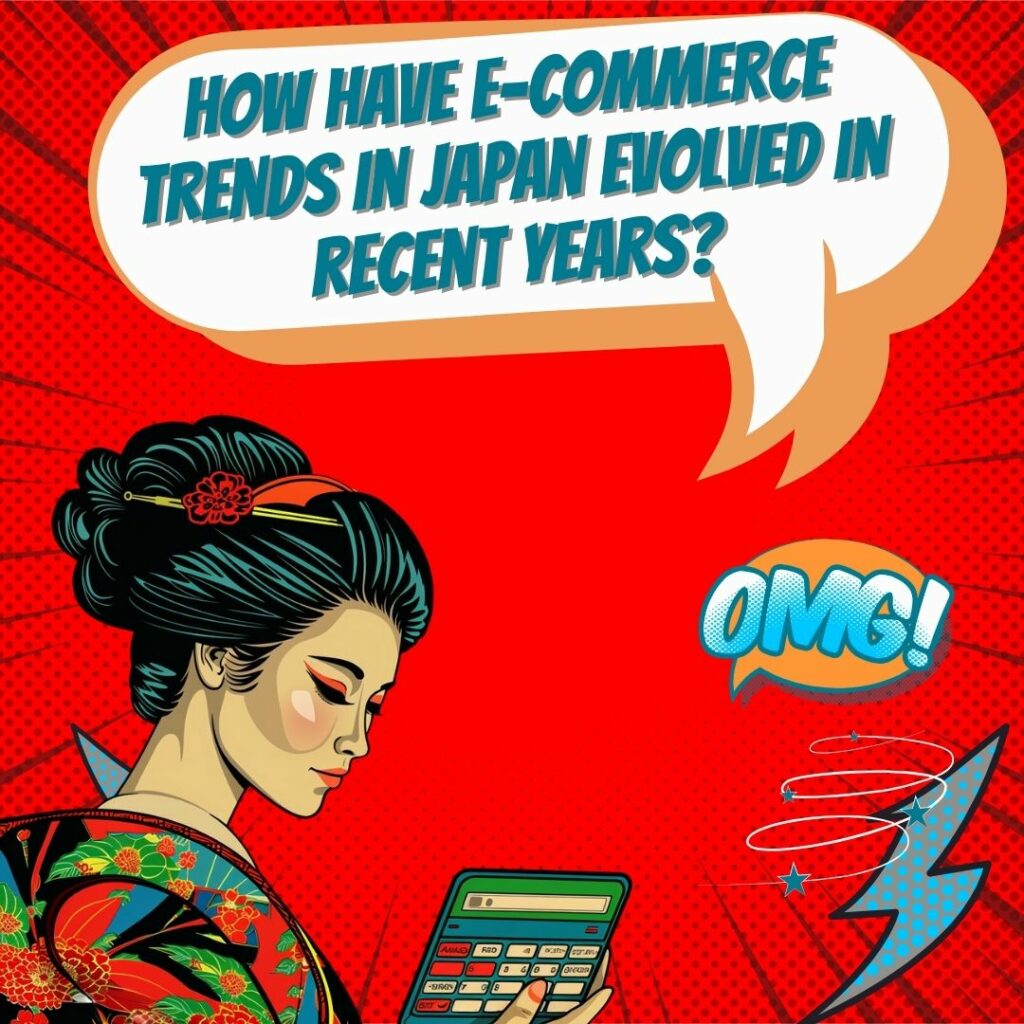Key Takeaways
✅ Digital Payments on the Rise: Japan's move towards a cashless economy has surged forward, especially because of the push by the government and a change in consumer habits. Perhaps most telling is the growth of credit card usage—jumping to 93.7 trillion yen in 2022—a signal that the landscape of transactions is truly transforming.
✅ Mobile Wallets and QR Code Payments: Our pockets are getting lighter as mobile wallets like PayPay gain traction, simplifying payments down to a single scan of a QR code. This method isn't just a fad. It's reshaping how businesses and customers think about the checkout process, offering not only ease but also added security and enticing incentives.
✅Cultural and Technological Factors: In Japan, where trust and innovation walk hand in hand, it's no surprise that payment technologies must cater to these values. Despite Japan's technological front, it's a market where tradition still has a say, so understanding the cultural underpinnings is vital to tapping into the potential of Japan's e-commerce spaces.

Introduction
Have you ever wondered what it takes to tap into a market where tradition meets technology? Understanding E-Commerce Trends and Online Shopping Behavior in Japan with Digital Payment Methods is not just about figures; it's about grasping a culture that highly values innovation while maintaining its roots. This evolving narrative isn’t isolated; Japan is currently the fourth-largest e-commerce market, aiming for a staggering user base of 66.9 million by 2028.
The rise of digital payments and a notable affection for mobile commerce are but the tip of the iceberg. Behind these stats lies a world where cards dominate online transactions, yet a significant shift toward mobile wallets and QR code payments is on the horizon. We're not just witnessing change; we're seeing a revolution in purchasing power.
Dive deep into this article, and you'll come away with not just numbers, but a strategic edge. Amid the ever-evolving consumer habits, technological advancements, and government strategies, there lie insights that can optimize your revenue, improve your return on ad spend (ROAS), and maximize your return on investment (ROI). Stick with us, and let's uncover the actionable insights and groundbreaking information that could set your business apart in the bustling Japanese e-commerce scene.
Top Statistics
| Statistic | Insight |
|---|---|
| Digital Payment Growth: Electronic payment methods in Japan reached 111 trillion yen ($838 billion) in 2022, a 17% annual increase. | This hike indicates a shift towards cashless societies and the growing acceptance of electronic transactions in Japan. |
| Smartphone Penetration: Smartphone usage in Japan reached 78% in 2020. | With smartphones in nearly 4 out of 5 hands in Japan, the market for mobile commerce continues to expand, suggesting businesses should optimize for mobile users. |
| QR Code Payments: QR code payments surged by 50% to 7.9 trillion yen in 2022. | The soaring popularity of QR payments reflects consumer demand for speedy and convenient transactions, pushing retailers to adopt this method. |
| E-commerce Market: Japan's e-commerce market users are expected to rise to 66.9 million by 2028, over half of its projected population. | This prediction emphasizes the vast potential customer base for online retailers and suggests room for exponential growth in the sector. |
Japan's Growing E-Commerce Market
Japan's rise to the fourth-largest e-commerce market globally is just the beginning. With the user base potentially hitting 66.9 million by 2028, Japan's digital storefronts are bustling with activity. But have you ever thought about the scale of change required in a society deeply rooted in cash transactions? It's significant. Yet, amidst this, digital payments are carving out their space, encouraged by government initiatives and a shift in population dynamics. E-commerce platforms are evolving rapidly, catering to the tech-savvy Japanese consumer with enhanced user experiences and diverse product offerings. The market is also seeing a surge in cross-border e-commerce, with Japanese consumers increasingly purchasing from international websites. This dynamic growth presents numerous opportunities for local and global businesses to tap into Japan's digital economy.
Evolution of Digital Payments
While the allure of cash persists, credit and debit cards are winning the digital payment race, with credit card usage alone ballooning to 93.7 trillion yen. It's a massive 16% jump that signals changing consumer preferences. Similarly, debit cards have notched up a 19% climb. However, it's not just plastic that's redefining shopping carts; digital wallets and QR code payments are on the rise, simplifying transactions to a touch or a scan. Mobile payment apps like PayPay, Line Pay, and Rakuten Pay are gaining widespread acceptance, especially among younger consumers. The government's push for a cashless society, through various incentives and subsidies, has further accelerated this shift. Retailers are also adopting these technologies to enhance customer convenience and streamline their payment processes.
Online Shopping Patterns
Did you know that nearly 39% of Japan's online purchases are completed right off a mobile device? That's a leap from the 27% back in 2020. But that's not all. Japanese shoppers aren't just browsing local; they're going global. This international outlook has them spending upwards of US$30 billion with overseas merchants. And when it comes to settling up, preference still leans heavily toward cards, commanding a 64% share in transactions. The rise of mobile shopping apps has made it easier for consumers to shop on the go, contributing to the increasing mobile purchase rate. Additionally, Japanese consumers value convenience and efficiency, leading to a preference for streamlined checkout processes. The integration of AI and personalization in e-commerce platforms is also enhancing the online shopping experience, driving higher engagement and conversion rates.
Innovations and Consumer Trends
Shopping in Japan is getting a makeover with the Buy Now, Pay Later model. No longer a novelty, BNPL finds favor for its financial flexibility, particularly online. Real-time payments are another disruptor, trading waiting times for instant gratification with innovative platforms built on PayIDs. Not to mention the spread of contactless technology that's practically an expectation in retail and hospitality spaces today. The adoption of augmented reality (AR) and virtual reality (VR) in e-commerce is providing immersive shopping experiences, allowing consumers to visualize products before purchasing. Subscription services are also gaining traction, offering convenience and exclusive deals that attract loyal customers. Sustainability is becoming a key factor, with more consumers seeking eco-friendly products and brands that prioritize environmental responsibility.
Challenges and Opportunities
Yet, it's not all smooth sailing. The digital wallet boom has hit a few snags, particularly for foreigners facing language barriers and personal detail discrepancies. But where there are challenges, there are also opportunities. Government endorsement of a cashless society aids this transition, encouraging it with incentives that aren't just for show. In the face of a pandemic, the pursuit for touchless interactions has only quickened the race towards tech-driven, cashless payments. Consider this: what could this mean for the future of Japan's e-commerce market? Businesses that can effectively navigate these challenges and adapt to consumer needs will be well-positioned to thrive. The increasing emphasis on cybersecurity and data privacy will also play a crucial role in gaining consumer trust. As digital payments continue to evolve, staying ahead of technological advancements and regulatory changes will be key to sustained success in Japan's e-commerce landscape.
AI Marketing Engineers Recommendation
Recommendation 1: Leverage Mobile Payments to Boost Conversion: In Japan, mobile wallet usage reached approximately 28% among digital buyers in 2021. To tap into this market, ensure that your e-commerce platform integrates seamlessly with popular mobile payment apps like PayPay, Line Pay, and Rakuten Pay. By providing a frictionless payment experience that Japanese consumers trust, you could potentially see an increase in checkout conversions.
Recommendation 2: Tailor Marketing Campaigns to Local Shopping Holidays and Events: Trends show that online shopping in Japan spikes during specific periods such as "Golden Week" in spring, the "Silver Week" in September, and year-end sales. Implement targeted marketing campaigns around these key shopping dates, using data analytics to understand customer preferences and shopping behavior. By capitalizing on these high-traffic periods with well-timed promotions and personalized offers, you can significantly boost sales.
Recommendation 3: Utilize Data Analytics for Personalized Shopping Experiences: Statistics indicate that 49% of Japanese consumers appreciate personalized recommendations when shopping online. Employ data analytics tools to track customer interactions, and create personalized shopping experiences based on their buying habits and preferences. By utilizing technology like AI-powered recommendation engines, you can increase customer satisfaction and loyalty, leading to repeat purchases and a stronger online presence in the Japanese market.
Relevant Links
- Unlocking the Secrets of Japan's E-Commerce Market
- Seamless Shopping in Japan: The Rising Wave of Mobile Payments
- Navigating Japan's Digital Payments Landscape: What's Trending?
- Craft Engaging Content for a Japanese Audience: Tips & Tricks
- Exploring Innovative Tech in Japanese Marketing: AI & AR
Conclusion
As we contemplate the future of online shopping in Japan's e-commerce market, it's evident that the digital landscape is evolving just as the cherry blossoms turn with the seasons. While there remains a comforting familiarity with cash, the blossoming trend towards digital payment methods cannot be ignored. The rise in popularity of credit and debit cards, showcased by a 16% growth to a staggering 93.7 trillion yen in 2022, signals a shift in consumer trust and preference. What's more, the adoption of digital wallets and the convenience of QR code payments illustrate an appetite for hassle-free transactions among Japanese shoppers.
Yet, we can't just stop at the checkout page. The story of this market is in the numbers: From nearly 40% of shopping now being completed on mobile devices to the extraordinary US$30 billion spent on cross-border purchases, Japan's consumers are embracing a global marketplace with open arms. And let's not forget innovations like Buy Now, Pay Later systems, which are carving out new pathways for online sales.
However, the plot thickens when we consider the challenges — navigating digital wallet apps in Japanese or aligning personal details with local banking systems can be like trying to find your way in Tokyo without a map. It's here where opportunities for market growth and support from the Japanese government play lead roles, encouraging a script that favors a seamless transition to cashless solutions.
As we look ahead, will innovations such as contactless technology and real-time payments continue to push the envelope, or will traditional preferences and practical barriers keep the story of Japan's e-commerce progression at a steady, yet cautious pace? What is clear is this: Understanding the e-commerce trends and shopping behaviors in Japan is not just about capturing today's transactions, but about anticipating the needs of tomorrow's consumer. The ongoing dialogue between advancing technology and cultural norms is set to define retailers' strategy, and potentially, their success in this dynamic market.
FAQs
Question 1: What is the current state of digital payments in Japan?
Answer: In Japan, digital payments are booming! Last year they hit a whopping 111 trillion yen, which is an impressive 17% jump from the year before. Things like credit cards, debit cards, cool QR code payments, and e-money are all the rage.
Question 2: What are the most common digital insufficient payment methods in Japan?
Answer: When shopping in Japan, you'll find QR code payments and mobile wallets pretty much everywhere. You've also got bank transfers, the old-school direct debit system, prepaid cards, and e-money being used a lot.
Question 3: How do mobile wallets work in Japan?
Answer: You've got your phone, right? Pop your card details into a mobile wallet app like Apple Pay or Google Pay, and just like magic, you can pay for stuff by waving your phone over a terminal. Super easy and no digging through your wallet!
Question 4: What is the role of contactless technology in Japan?
Answer: Contactless tech like NFC is huge in Japanese stores and restaurants. It's quick, it's clean, it's hassle-free – perfect for those in a rush or not keen on touching money.
Question 5: How do QR code payments work in Japan?
Answer: Imagine this: You're at a checkout, there's a QR code, you whip out your phone, open your payment app, scan that code, and bam – you've paid. It's like scanning an instant noodle cup at the self-checkout, but for your whole shopping.
Question 6: What is the significance of bank transfers and direct debit in Japan?
Answer: For most online shopping and paying bills in Japan, bank transfers and direct debits are a big deal. They're the backbone of internet banking, and they make life a lot easier.
Question 7: How do prepaid cards and e-money work in Japan?
Answer: Got a prepaid card like a Suica or an ICOCA? You're set for the trains. And with e-money services, you're a VIP at convenience stores and a bunch of other places.
Question 8: What is the mental impact of the COVID-19 pandemic on digital payments in Japan?
Answer: The pandemic's really changed things up, pushing everyone towards going cashless. Now more than ever, people want to shop without touching cash or anything else.
Question 9: How can businesses leverage digital payments trends in Japan?
Answer: If you're a business, get on board with all these digital payment options. Make your checkout process smooth like butter, and you'll be golden in this fast-moving, cashless scene.
Question 10: What are the benefits of using digital wallets in Japan?
Answer: Digital wallets are all about zipping through transactions. Forget the ATMs – pay for your noodles, clothes, or train fare in a flash, all from your phone.
Academic References
- KOMOJU. A Guide to Japan's Payment Methods. This report discusses the growing adoption of digital wallets and mobile payments in Japan, emphasizing the role of consumer convenience and government policies in this upsurge. The continued expansion of digital wallets as a preferable payment option is projected.
- Mordor Intelligence. Japan Payments Market Trends. This research delves into the increasing preference for mobile wallets during e-commerce transactions in Japan, accentuating their ease of use and security benefits. It also notes the emerging popularity of alternative digital currencies and buy now, pay later (BNPL) services.
- AI Marketing Engineers. Japanese E-commerce Payment Trends: Navigating the Digital Landscape. This analysis provides a comprehensive overview of Japan's e-commerce market, examining a variety of payment strategies that blend traditional means with modern digital solutions. It underscores the vital role of trust and security to Japanese consumers.
- Finextra. Rising Sun, Rising Digital: The Evolution of Payments in Japan. This article explores the dynamic shift in Japan's payment landscape due to the widespread adoption of contactless payments, QR code systems, and mobile wallets. It examines e-commerce's significant influence on this transition, with online giants such as Amazon and Rakuten bolstering digital payment adoption.
- Statista. Payment methods in Japan - Statistics & Facts. This statistical overview examines the surge in digital payment usage among Japanese consumers since the onset of the COVID-19 pandemic, highlighting a notable increase in electronic payment methods, alongside credit and debit card usage.












